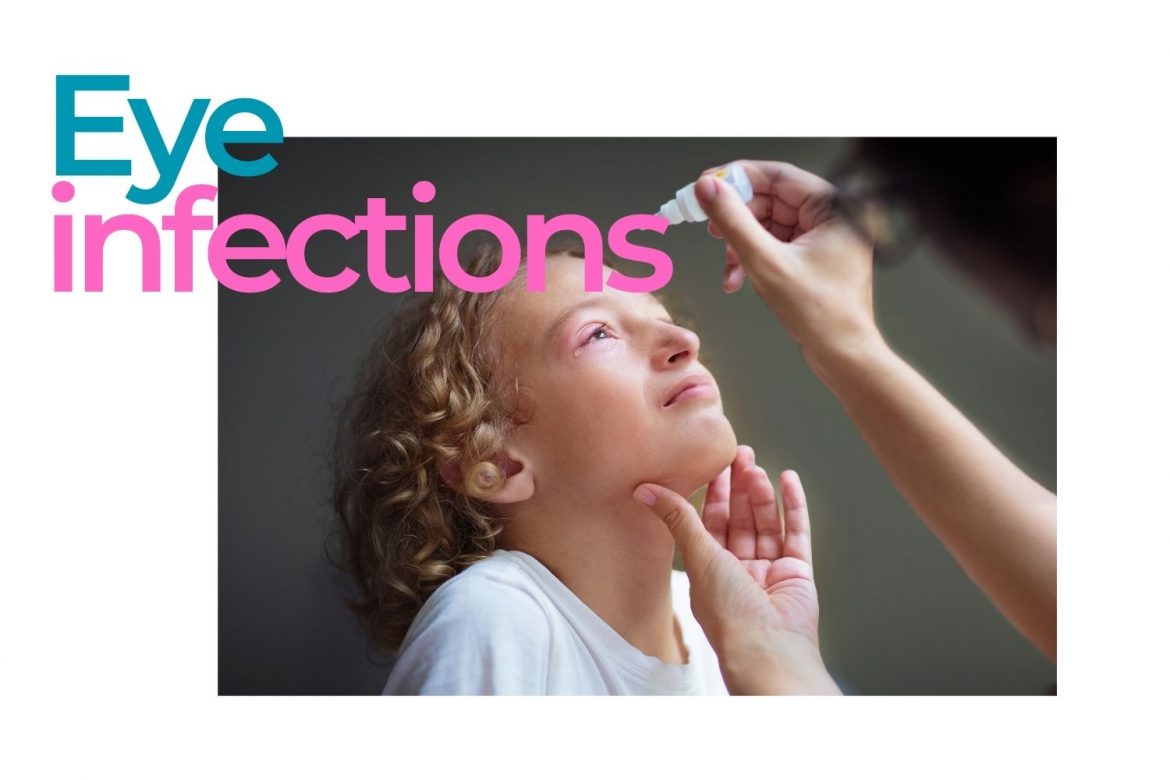![]()
Eye infections are common ailments that many of us experience at some point in our lives. In fact, eye infections are so common that each year, an estimated 1 million Americans make visits to their doctor specifically for eye-related infections.
While commonly referred to as eye infections, two terms related to the condition that are often used interchangeably are “eye colds” and “pink eye.” While both conditions affect the eyes, they are very different in their causes, symptoms, and treatments.
What is an eye cold?
An “eye cold” is a general term used to describe a viral infection that affects the eyes. Typically caused by the same viruses responsible for the common cold, an eye cold can cause redness, watery eyes, and a gritty or itchy sensation in the eyes. It is important to note that an eye cold is not a medical term but is commonly used to describe viral conjunctivitis, an inflammation of the conjunctiva—the thin, transparent layer covering the white part of the eye.
Symptoms of an eye cold include:
- Redness in the whites of the eyes
- Watery eyes
- Itchiness or irritation
- Sensation of grittiness
- Swelling of the eyelids
Unlike bacterial conjunctivitis, which may produce a thick, yellow, or green discharge, viral conjunctivitis associated with eye colds often results in a clear or slightly thick discharge. The contagious nature of viral conjunctivitis means it can spread easily through direct or indirect contact with infected individuals or contaminated surfaces.
What is pink eye?
“Pink eye” is a broader term used to describe inflammation of the conjunctiva, regardless of the underlying cause. While viral infections can lead to pink eye, they can also result from bacterial infections, allergies, or irritants. Medically known as conjunctivitis, pink eye typically includes redness, swelling, and increased tearing.
Specific types of pink eye include:
Viral conjunctivitis is caused by viruses like adenoviruses and those that are responsible for the common cold. It is highly contagious and often spreads through respiratory droplets or contact with contaminated surfaces. Viral conjunctivitis can also be caused by other viruses, including herpes simplex virus and the varicella-zoster virus.
Bacterial conjunctivitis is caused by bacteria such as Staphylococcus aureus or Streptococcus pneumoniae. Bacterial conjunctivitis is characterized by a thick, yellow, or green discharge and may be more localized to one eye. Like viral conjunctivitis, the bacterial form of conjunctivitis is also highly contagious.
Allergic conjunctivitis is triggered by allergens such as pollen, dust, or pet dander. It often leads to itching, tearing, and redness in both eyes. Allergic conjunctivitis is not contagious.
Irritant conjunctivitis is caused by exposure to irritants like smoke, chemicals, or chlorine. Symptoms are usually short-lived and resolve once the irritant is removed. Similar to allergist conjunctivitis, conjunctivitis resulting from exposure to irritants is not contagious.
Differentiating between an eye cold and pink eye
While both eye colds and pink eye involve inflammation of the conjunctiva, certain features can help differentiate between them, including:
Discharge type
Eye colds often result in a clear or slightly thick discharge, while bacterial conjunctivitis associated with pink eye produces a thicker, yellow, or green discharge.
Onset
Eye colds are frequently associated with symptoms of the common cold, such as sneezing and nasal congestion, while pink eye can result from various causes, including allergies, bacteria, or irritants.
Duration
Viral conjunctivitis, or eye colds, typically resolve on their own within one to two weeks. Bacterial conjunctivitis may require antibiotic treatment, and conjunctivitis resulting from allergens and irritants tends to persist as long as exposure to the irritant or allergen continues.
Contagiousness
Eye colds, being viral, are very contagious and can spread easily through contact. Pink eye can also be contagious, depending on the underlying cause, with bacterial and viral conjunctivitis being particularly contagious.
Treating and preventing eye colds and pink eye
Both eye colds and pink eye may resolve on their own, but some steps can also help to alleviate symptoms and prevent further spread, these include:
Hygiene practices
Washing hands frequently, avoiding touching the eyes, and using separate towels to prevent the spread of infection.
Warm compresses
Applying warm compresses to the eyes can help relieve discomfort and reduce swelling.
Artificial tears
Over-the-counter lubricating eye drops can be used to provide relief from dryness and irritation associated with both conditions.
Antibiotics
Bacterial conjunctivitis may require antibiotic eye drops as prescribed for use by your healthcare professional.
Avoiding allergies
For allergic conjunctivitis, identifying and avoiding allergens is crucial. Antihistamines or allergy eye drops may also be recommended by your doctor.
While eye colds and pink eye share many of the same symptoms, they are not the same thing. Understanding the differences between these two conditions is important for determining appropriate treatment. Whether caused by viruses, bacteria, or allergens, being able to identify and manage symptoms can help relieve discomfort and prevent further spread.
If symptoms related to either of these conditions persist or worsen, seeking professional medical advice is essential for accurate diagnosis and treatment.

